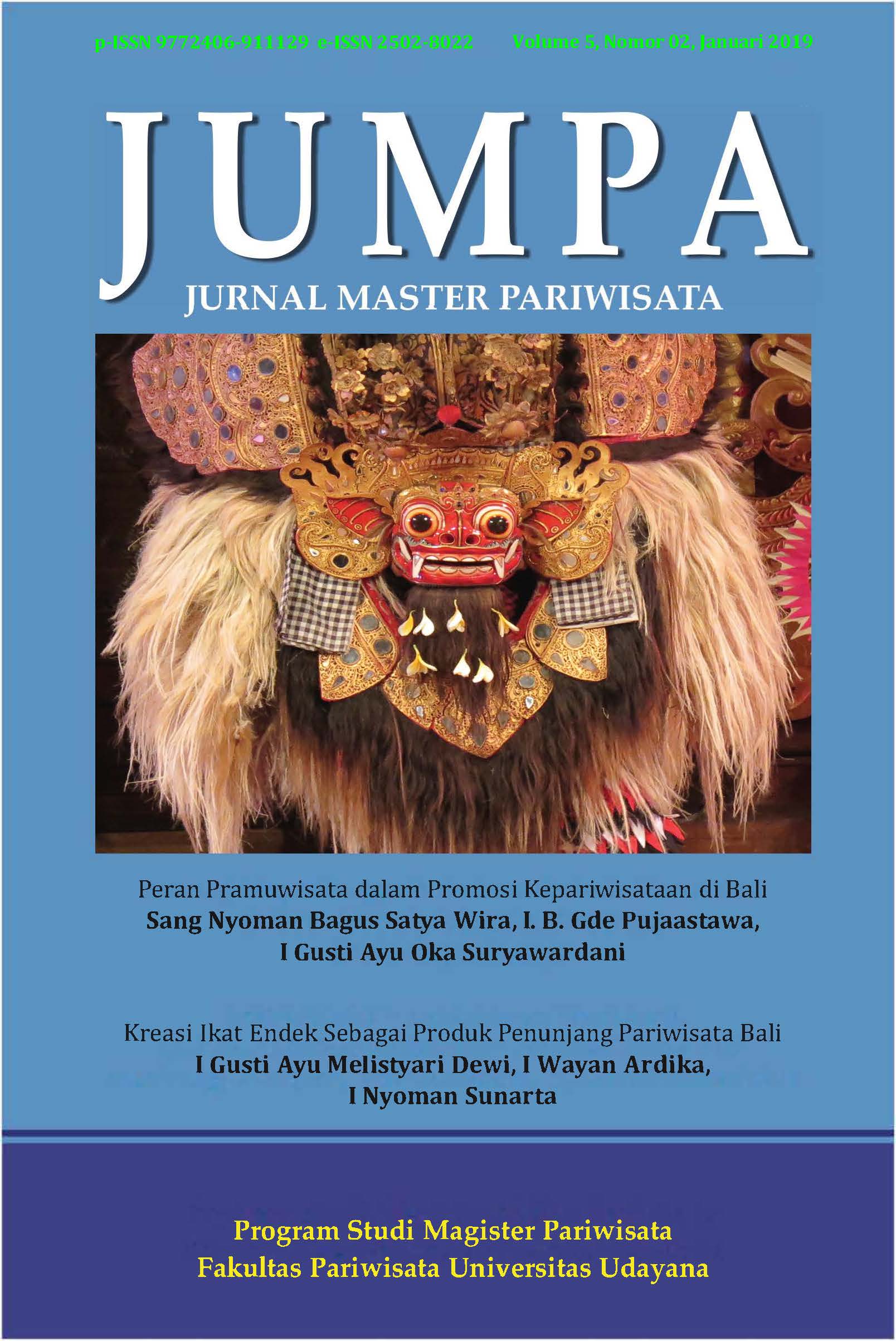POTENSI DAN PENGEMBANGAN DESA WISATA SURANADI DI KECAMATAN NARMADA KABUPATEN LOMBOK BARAT
Abstract
Indonesia has many areas with the various tourism potentials but faces obstacles in the management, one of them is Suranadi Tourism Village in Narmada District, West Lombok Regency. This research aimed to analyze 1) the potential and tourism management system in Suranadi Tourism Village; 2) internal and external factors affecting the development of Suranadi Tourism Village; 3) the development strategy of Suranadi Tourism Village. This research applies some theories such as tourism destination development theory by Cooper (1993), irridex theory by Doxey (1976), and tripartite attraction design theory by Gunn (1972). This research used qualitative approach with descriptive method. Data obtained through interviews and observation. The method of data analysis in this research is by qualitative data analysis and SWOT analysis. The results showed that the potential of Suranadi Village as a cultural tourism village that is the potential of nature and culture. The various of potentials in the Suranadi Tourism Village as a whole has not managed professionally and optimally so that economic benefits are not fully felt for local community. The results of SWOT matrix analysis showed that there are four alternative strategies generated such as SO strategy (Strengths-Opportunities), ST strategy (Strengths-Threats), WO strategy (Weaknesses-Opportunities), WT strategy (Weaknesses-Threats).
Keywords: tourism potential, development strategy, Suranadi Tourism Village, SWOT














